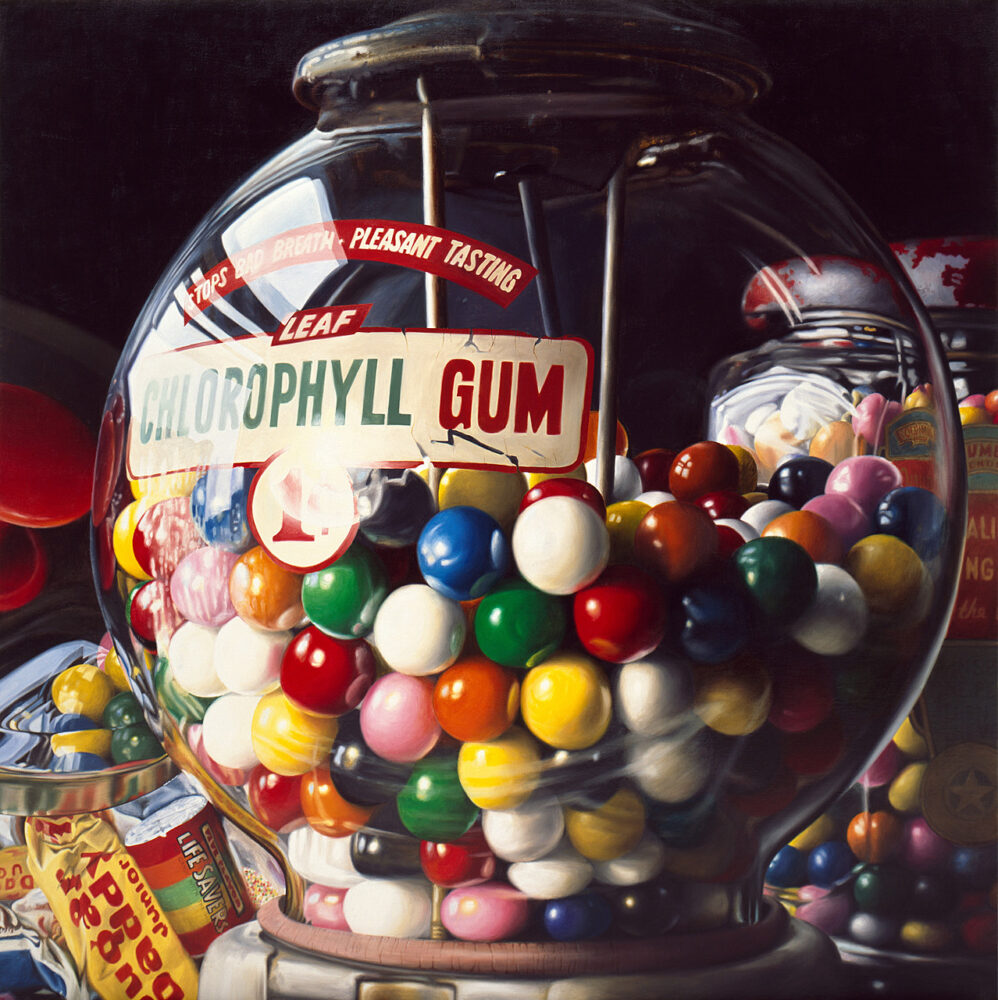Photorealism is an art movement that emerged in the late 1960s and early 1970s, characterized by paintings that are so meticulously detailed they resemble photographs. Artists in this movement use a variety of techniques to replicate the appearance of photographic images, often focusing on mundane or everyday subjects with a level of precision and realism that challenges the viewer’s perception of art and reality.
Photorealism emerged in the late 1960s and early 1970s in the United States as a counter to Abstract Expressionism and Minimalism, evolving from Pop Art and influenced by the proliferation of photographic media. This movement, gaining momentum amid criticism for its reliance on photography, saw artists like Richard Estes using photographs to create paintings with remarkable detail and lifelike accuracy, challenging the art world’s focus on abstraction and reasserting the value of realism in art [1] [2].

Artists begin their painting process by capturing their subject in a photograph, which serves as a detailed reference for the artwork. They then use a mechanical device, such as a pantograph, to accurately transfer the photograph’s details onto canvas. This step ensures the precision of the composition and the faithful replication of the subject. In the final stage, artists infuse the piece with their unique style, adding personal touches through color, texture, and interpretation. This blend of technical accuracy and artistic expression transforms the initial photographic reference into a distinctive painting that reflects the artist’s vision, marrying realism with individual creativity to complete the artwork. [2].

The Solomon R. Guggenheim Museum by Richard Estes is another great example of photorealism. In this piece, you can see incredible detail such as the pattern of the bricks on the road, the moss on the building, the detailed windows, and the shadows the reflections on the buildings and cars.

This picture showcases a car with notable details being the wood grain pattern on the vehicle, reflections of power lines on the windows, and soft shadows caused by ambient occlusion on the buildings.



In summary, the journey from photograph to painting is a sophisticated fusion of detail and imagination. Starting with a photograph ensures that artists capture every nuance of their subject. Employing tools like the pantograph, they precisely replicate these details on canvas. The transformation culminates with the artist’s personal flair—through color, texture, and interpretation—elevating the work beyond mere replication. This process highlights the artist’s ability to blend technical precision with creative expression, transforming a static photo into a dynamic piece of art that reflects both realism and personal vision.
[1] Wikipedia “Photorealism” https://en.wikipedia.org/wiki/Photorealism#:~:text=Photorealism%20is%20a%20genre%20of,as%20possible%20in%20another%20medium. [2] The Art Story “Summary of Photorealism”https://www.theartstory.org/movement/photorealism/ [3] Guggenheim “Photorealism”
https://www.guggenheim.org/artwork/movement/photorealism
Some of the writing was created using ChatGPT.


4 Comments. Leave new
Hey Kyle!
Your post breaks down photorealism well, showing how it’s all about making paintings that look as real as photos, often focusing on everyday scenes. It’s neat how you highlighted artists and specific artworks to illustrate the point.
To enhance your overview:
Why the everyday focus? It’d be interesting to know why photorealists often choose common subjects for their art.
Viewer impact? How do these realistic paintings affect the way we see ordinary objects or photography?
Tech’s role? Has new technology influenced photorealism?
Current relevance? Is photorealism still appealing in the digital age?
Exploring these could deepen the understanding of photorealism’s significance and appeal.
Great work!
It would definitely be interesting to see what the future is like! I wonder if you can use AR/VR to do some interesting 3d photorealism art pieces or use raytracing software to help the artist envision what they want.
Hey Kyle,
Nice aesthetic style choice. I originally glanced through these pictures before reading the text and thought they were actually pictures. What made you interested in this aesthetic?
I was also drawn to them because they look like photos. In addition I like how much of a difference realistic lighting makes to a picture.